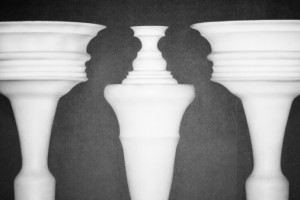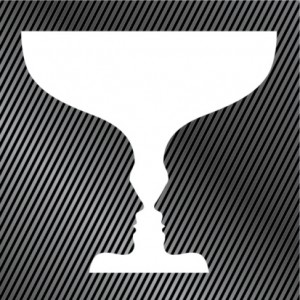From Handmaid to Wife
By Nir Menussi: March 4, 2011: Category Inspirations, Networks of Meaning
Integrating Science and Mysticism, Article 9
 We now need to address the second reason why we think an incorporation of science into Judaism would fare better than medieval Catholicism’s traumatic attempt to control science: that it is not mere subjection of science to Torah wisdom we’re after, but an integration of the two.
We now need to address the second reason why we think an incorporation of science into Judaism would fare better than medieval Catholicism’s traumatic attempt to control science: that it is not mere subjection of science to Torah wisdom we’re after, but an integration of the two.
Actually, as we’ve seen, a certain degree of subjection to Torah, or subsuming under it, is unavoidable. Torah belongs by definition to a higher order of knowledge than science, and so the latter must be incorporated into the moral and metaphysical framework it provides. But once this relationship is established, the two fields of knowledge are to be treated as equally valid truths. In other words, in order to have Torah and science meet as equal partners, we must first have a rectifying experience of science serving as handmaid to religion.
Given that a certain degree of ‘mistressness’ on behalf of religion is unavoidable, the question arises: could Judaism be a fundamentally better mistress than historical Christianity was? Is it even possible for a religion to be a ‘good mistress’ to science?
“A Handmaid that is Heir to Her Mistress”
A group of verses in Proverbs list the four things for which “the Earth is disquieted” and finally “cannot bear”. The final and decisive item on this list is described as “a handmaid that is heir to her mistress”.
Accepting, as we have, that at the end of the day science is in essence a handmaid to religion, this verse seems to describe, at least from a certain point of view, the spiritual and cultural upheaval that we have been witnessing ever since science’s big ‘slave revolt’ in the scientific revolution. If science is a handmaid, then although its rebellion enabled it to discover and achieve the most amazing things, on a fundamental level, a crucial metaphysical hierarchy has been broken which is akin to an earthquake.
Needless to say, it’s difficult to accept this point of view as the final word on this subject. And indeed, Chassidic interpretation—which always rereads familiar verses in ways that turn your head around—has explained this very same verse in a completely contrary, and counter-intuitive, way.
A “handmaid inheriting her mistress”, according to this interpretation, isn’t necessarily a negative notion. There is a positive sense in which a handmaid can, and should, ‘inherit’ her mistress’ position: she should tutor her mistress in the things that only she, as handmaid, is able to know. While the mistress is noble and educated, she is also, for the very same reasons, deeply constrained. She cannot go about the world as a common person, cannot know the smell of the marketplace nor the taste of raw food. She cannot, in short, experience the world from below, only from above. To this kind of knowledge, accumulated from the ground up, it is the handmaid that is privy, and in this sense, she is the ‘mistress’. The good mistress would realize this, and learn from the handmaid regarding her field of expertise.
Adding this interpretation to the verse from Proverbs offers a completely new vision as to how science can again become religion’s handmaid, but in a way that would not demean it, but rather honor and elevate it. The idea that a good mistress learns from her handmaid—so much so that the two can be seen as changing places—means the Torah is interested in learning from science. This alone promises we’re in for a completely different type of relationship between the two from what we’ve come to expect of science and religion.
Complementary Hierarchies
 The rectified mistress-handmaid relationship according to Chasidism is more subtle than it appears. It is not egalitarian in a straightforward way, nor is it one-dimensionally hierarchical. Rather, it combines two distinct and opposite hierarchies—a major and a minor one, we’ll call them—so that they balance one another, neutralizing each one’s negative tendency to negate the other.
The rectified mistress-handmaid relationship according to Chasidism is more subtle than it appears. It is not egalitarian in a straightforward way, nor is it one-dimensionally hierarchical. Rather, it combines two distinct and opposite hierarchies—a major and a minor one, we’ll call them—so that they balance one another, neutralizing each one’s negative tendency to negate the other.
The major hierarchy is that of Torah being the mistress. It means that the Torah is the one providing the overall worldview—that the world is purposefully created, that it has a spiritual dimension, etc.—as well as the metaphysical framework and moral code within which scientific knowledge and power are to be included. The minor hierarchy is that in which Torah is also a student of science, placing herself humbly beneath it and asking it to teach her. This hierarchy means the Torah accepts that there is Divine knowledge in nature which can only be discovered using the scientific method, and that science therefore completes Torah.
Combining these two hierarchies together enables both their truths to coexist. It is a roundabout route to equality, demonstrating how a hierarchical relationship can evolve into an egalitarian one; how science can start as Torah’s handmaid, and then become its wife.
http://www.interinclusion.org/inspirations/the-temple-of-torah-and-science/
From Handmaid to Wife ,






















;)
;)
;)
;)
;)
;)
;)
;)
;)
;)
